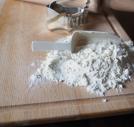Diagnosing Diabetes In Infants
Type 1 diabetes can affect individuals of any age, including infants and children. If you find out your baby has diabetes, it is important to start taking action immediately to make sure he or she has a safe and healthy lifestyle and diet. Don’t stress; diabetes is rarely a life-threatening disease in infants, as long as parents know how to treat their child.
Type 1 diabetes is an autoimmune disorder that prevents the body from producing enough insulin to breakdown glucose for energy. Some infants can also develop type 2 diabetes, a disorder of insulin-resistance causing blood sugar to rise. Infants with Down syndrome and Turner syndrome are especially vulnerable.
Signs and Symptoms
- Crankiness: All babies have their cranky moments, but these are usually sporadic and can be easily treated with a nap or some milk. If your baby is perpetually cranky, he or she may be experiencing health complications from diabetes.
Sweating: Babies who sweat a lot may be exhibiting a symptom of diabetes.
Trembling: Diabetes can cause some infants to seem frightened or shaky.
Paleness or bluish lips and fingers: If your child has very pale skin or a bluish tint to his or her lips, fingers, or toes, this may be evidence of diabetes.
If your child has any of these symptoms, it is essential to get his or her glucose tested immediately. An infant’s brain development requires a continuous supply of glucose to the brain. It is the parents' responsibility to monitor their child’s glucose. If your child is easily dehydrated or urinates frequently, these can be signs of hypoglycemia.
If your child is diagnosed with diabetes, monitor his or her insulin intake to reduce the chances of developing hypoglycemia. Dehydration is a major risk factor for young children and can result in ketoacidosis or a diabetic coma if untreated. Apple juice is a great quick-fix for dehydration.
Photo: Pixabay
More Articles
More Articles
With its slightly nutty flavor, chewy texture, and nutritional punch farro is an ancient whole grain worth a place in our pantry.
Farro...
Having diabetes is cause for concern, however it doesn’t mean that you need to eliminate all of your favorite foods from your diet completely....
With diabetes becoming more of an epidemic each and every day, being knowledgeable about the disease, its effects on the body as well as ways to...
If you’re a diabetic or live with one, it can be tough trying to figure out the best foods to eat because your priority is to control your blood...
In this post, I will show you the 10 best ice creams for diabetics.
When you think of sweetened foods that a diabetic shouldn’t consume,...
More Articles
If you’re living with diabetes, snacking is a necessity because going for more than 3-4 hours without eating can be detrimental to your health....
For diabetics, choosing healthy snacks can be a daunting task.
A good rule of thumb is to pick out snacks that are rich in protein, fiber,...
According to information available through the National Institutes of Health, there’s an estimated 462 million people in the world who are...
Eleven Clinical Studies
After eleven clinical studies and 300,000 participants, researcher Vasanti Malik and her team of researchers...
Diabetic women often have a harder time losing weight than non-diabetic women. A study funded by Jenny Craig proved that diabetic women have an...
Many recent studies have proved that magnesium levels are lower in patients with diabetes than in non-diabetics. This magnesium...
Fluid retention, also known as edema, is a problem that affects many diabetics, especially those with type 2 diabetes...
Some of us might be thrilled if we could manage our blood sugar by sitting in a hot tub or sauna, instead of working up a sweat biking, or using...
Cooking and baking with the ancient cereal grain sorghum has health benefits for people with diabetes, and those with weight control issues....
When it comes to certain foods, there are always questions as to whether or not a diabetic can have them without...
Matcha tea is a rich, creamy, full-bodied beverage with amazing nutritional properties that address several diabetes health concerns.
The...
Salads are good example of foods that type 2 diabetics can enjoy with relatively low guilt. With the right greens and other elements added, salad...
Remaining gainfully employed is important to many people. Those who live with any form of diabetes may find that some lines of work are more...
Learning that you have diabetes does mean making some lifestyle changes. One of the areas that needs attention is your diet. Most people find that...
One of the more challenging aspects of life as a type 2 diabetic is managing your diet. There’s often the temptation to avoid certain foods...



































